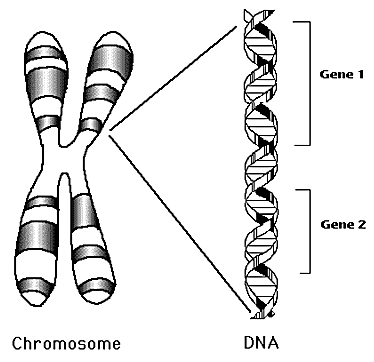 |
|
|
What are genes? |
|
| Back | |
 |
|
We know that DNA is the basis for life, but are our nuclei just filled with random arrangements of DNA? Nothing in life is that simple. In order to achieve the complexity of life we need complex arrangements of DNA that can ultimately encode for proteins. This is were genes come in. According to the Webster Dictionary a gene is a specific sequence of nucleotides in DNA or RNA that is located in the germ plasm usually on a chromosome and that is the functional unit of inheritance controlling the transmission and expression of one or more traits by specifying the structure of a particular polypeptide and especially a protein or controlling the function of other genetic material. Essentially this means that a gene is a sequence of DNA that encodes a protein that is needed for life. Recent advances in molecular biology have led to the understanding that a gene can actually encode for more than one protein depending on the conditions the organism is in. |
 |
|
This page was created as part of the ISSI 470 class at Monmouth College. All ideas are the property of the author. |